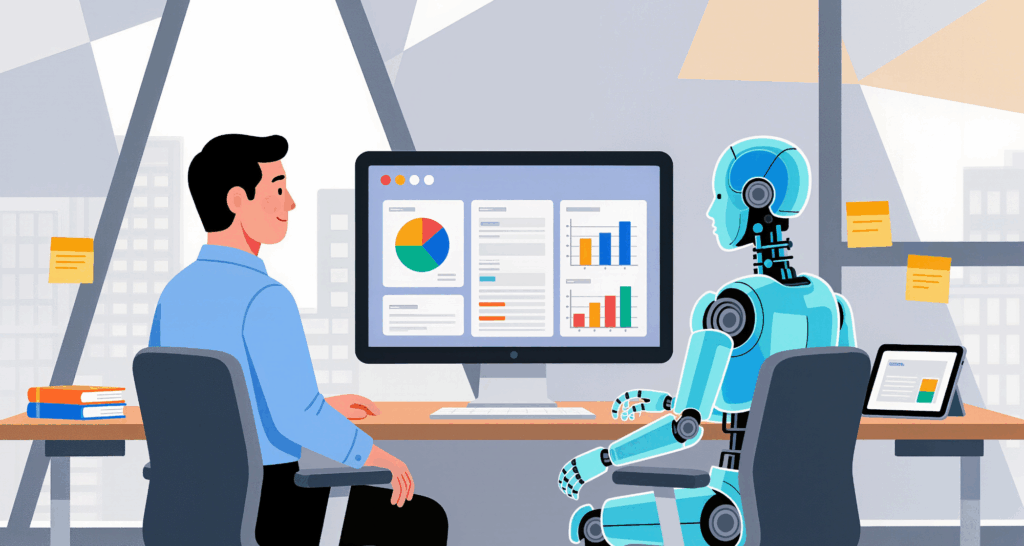Beyond Pilots: The New Playbook for Scaling AI Agents Across the Enterprise
From isolated experiments to enterprise transformation, here’s how organizations can move beyond prototypes and scale AI agents responsibly, strategically, and at speed.
AI agents are being deployed in more industries, but most companies remain in the pilot phase despite growing interest.
According to Gartner’s 2025 AI Adoption Pulse, just 12% of organizations have scaled AI projects beyond experiments. Many have built strong proofs of concept, such as virtual assistants that use natural language or agents that manage workflows, but few have had a consistent impact across the whole company.
The reason isn’t a lack of innovation. What’s missing is a clear playbook for scale. Moving from pilot to production takes more than technical success. It needs structure, trust, and a clear strategy.
This shift is known as moving from automation to autonomy. In this stage, AI agents become collaborators within the company instead of just tools.
Why Most Pilots Plateau
Pilots usually work well in controlled settings with limited variables and direct oversight. However, scaling across an organization poses challenges such as fragmented data, separate governance, and inconsistent ways humans and AI interact.
Many teams underestimate how agentic systems act in real-world situations. For example, an AI procurement agent might work perfectly well on its own but fail to follow finance protocols when connected to live systems. The main challenge is not capability but coordination.
Enterprise leaders need to understand that scaling AI agents is not just about adding more technology. It requires rethinking and redesigning the environment where these agents work.
Designing the AI Operating Stack
To scale responsibly, organizations need a strong foundation: an AI operating stack that lets agents act, learn, and grow within clear boundaries.
That stack includes three layers:
- Data Foundation: Unified, accessible, and governed datasets. Agents depend on context-rich data to make relevant, real-time decisions.
- Agent Orchestration: A coordination framework that lets multiple agents work together, such as a marketing agent syncing with a supply chain agent without disrupting human workflows.
- Governance and Observability: Systems that monitor, explain, and audit every autonomous action, ensuring accountability across the chain of command.
With this foundation, AI moves from isolated pilots to a scalable and self-improving ecosystem.
Human-in-Command: The New Collaboration Model
Scaling agentic AI involves people as much as systems. This change creates new roles such as AI supervisors, model auditors, and orchestration leads, whose job is to oversee rather than operate.
Humans are no longer removed from the process; instead, they are strategically repositioned. They define goals, set limits, and step in when things are unclear. This model, known as human-in-command, ensures that autonomy and accountability grow together.
When people know how to delegate to digital agents and when to step in, trust grows naturally. As trust increases, so does adoption.
Governance at Scale: Building Confidence, Not Control
Governance frameworks are often seen as guardrails that slow innovation. In reality, they are what make scaling possible.
A mature AI governance model defines:
- Decision boundaries — where agents act independently and where they escalate.
- Auditability — ensuring that every decision is explainable and reversible.
- Ethical alignment — embedding fairness, privacy, and compliance into the model’s behavior.
Enterprises that apply these principles early avoid oversight problems later. Governance is not just a cost; it is the layer of confidence that allows autonomy to succeed.
From Pilot Projects to Enterprise Platforms
Scaling AI agents is not a one-time achievement; it is an ongoing process. Leading companies are creating AI Centers of Enablement (CoEs), which are cross-functional teams that set standards, track results, and improve deployment practices over time.
These teams see each new deployment as part of a larger system, not just a separate project. Lessons from one department help improve others. Over time, this builds a network of autonomous agents that strengthen the whole organization.
The Next Frontier: Adaptive Autonomy
The future of agentic AI is not fixed autonomy but adaptive autonomy. These systems adjust their independence based on context, complexity, and confidence.
For example, an AI sales agent might negotiate within set limits but ask for human help with unusual cases. A logistics agent could optimize routes on its own but notify supervisors if there are disruptions.
This balance between taking initiative and providing oversight shows how mature enterprise AI has become.
Scale Is a Mindset
Scaling AI agents across an enterprise is not only a technical change but also a cultural one. Leaders must see autonomy as a shared responsibility, where humans set the goals and AI helps carry them out.
Companies that achieve this balance will move beyond pilot projects and create a strong base for ongoing, scalable innovation.
Because the true measure of progress is not the number of agents you deploy, but how intelligently, ethically, and collaboratively they work in the environment you provide.




